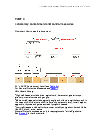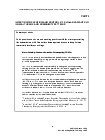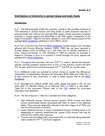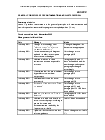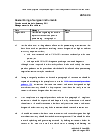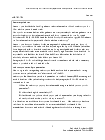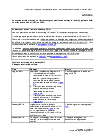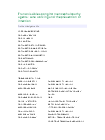Guidance
Minimise transmission risk of CJD and vCJD in healthcare settings
Guidance on prevention of CJD and vCJD by Advisory Committee on Dangerous Pathogens' Transmissible Spongiform Encephalopathy (ACDP TSE) Risk Management Subgroup.
Documents
Introduction
PDF, 105KB, 10 pages
Health and safety management of transmissible spongiform encephalopathy
PDF, 34.5KB, 12 pages
Laboratory containment and control measures
PDF, 155KB, 22 pages
Annex A2: Distribution of infectivity in animal tissue and body fluids
PDF, 73.1KB, 7 pages
This file may not be suitable for users of assistive technology. Request a different format.
If you use assistive technology and need a version of this document in a more accesible format please email publications@dh.gsi.gov.uk quoting your address, telephone number along with the title of the publication ("Annex A2: Distribution of infectivity in animal tissue and body fluids").
Annex B: Diagnostic criteria
PDF, 45.7KB, 4 pages
Annex C: General principles of decontamination and waste disposal
PDF, 200KB, 8 pages
Annex D: Transport of transmissible spongiform encephalopathy-infected material
PDF, 122KB, 16 pages
Annex E: Quarantining of surgical instruments
PDF, 61.1KB, 3 pages
Annex F: Endoscopy
PDF, 274KB, 20 pages
Annex H: After death
PDF, 99.2KB, 6 pages
Annex L: Managing CJDvCJD risk in ophthalmology
PDF, 212KB, 30 pages
Annex M: Managing vCJD risk in general surgery and liver transplantation
PDF, 113KB, 9 pages
CJD guidance for ophthalmologists
PDF, 179KB, 3 pages
Frequently asked questions
PDF, 46.2KB, 4 pages
Abbreviations
PDF, 32.5KB, 1 page
Acknowledgements
PDF, 22.4KB, 2 pages
Detail
This guidance produced by the Advisory Committee on Dangerous Pathogens’ Transmissible Spongiform Encephalopathy (ACDP TSE) Risk Management Subgroup aims to help minimise the risk of transmission of CJD and vCJD in healthcare and other work settings.
- Published:
- 27 November 2012
- Updated:
- 13 May 2013
+ full page history
- 13 May 2013 12:10
- Updated version of Annex J on Presurgical Assessment
- 27 November 2012 00:00
- First published.
- Organisation:
- Department of Health
https://www.gov.uk/government/publications/guidance-from-the-acdp-tse-risk-management-subgroup-formerly-tse-working-group
Sunday, September 08, 2013
Iatrogenic Creutzfeldt-Jakob disease via surgical instruments and decontamination possibilities for the TSE prion
http://creutzfeldt-jakob-disease.blogspot.com/2013/09/iatrogenic-creutzfeldt-jakob-disease.html
Article in Press
Cleaning, disinfection and sterilization of surface prion contamination
G. McDonnell Affiliations STERIS Corporation, Mentor, Ohio, USA
Corresponding Author InformationCorresponding author. Address: STERIS
Corporation, 5960 Heisley Road, Mentor, OH 44060, USA. Tel.: +1 440 392 7118.
email address, C. Dehen Affiliations CEA, Institute of Emerging Diseases and
Innovative Therapies (iMETI), Division of Prions and Related Diseases (SEPIA),
Fontenay-aux-Roses, France , A. Perrin Affiliations CEA, Institute of Emerging
Diseases and Innovative Therapies (iMETI), Division of Prions and Related
Diseases (SEPIA), Fontenay-aux-Roses, France , V. Thomas Affiliations STERIS,
CEA, Fontenay-aux-Roses, France , A. Igel-Egalon Affiliations CEA, Institute of
Emerging Diseases and Innovative Therapies (iMETI), Division of Prions and
Related Diseases (SEPIA), Fontenay-aux-Roses, France STERIS, CEA,
Fontenay-aux-Roses, France , P.A. Burke Affiliations STERIS Corporation, Mentor,
Ohio, USA , J.P. Deslys Affiliations CEA, Institute of Emerging Diseases and
Innovative Therapies (iMETI), Division of Prions and Related Diseases (SEPIA),
Fontenay-aux-Roses, France , E. Comoy Affiliations CEA, Institute of Emerging
Diseases and Innovative Therapies (iMETI), Division of Prions and Related
Diseases (SEPIA), Fontenay-aux-Roses, France
Received 3 October 2012; accepted 27 August 2013. published online 25
September 2013. Accepted Manuscript
Abstract PDF
Summary Background
Prion contamination is a risk during device reprocessing, being difficult
to remove and inactivate. Little is known of the combined effects of cleaning,
disinfection and sterilization during a typical reprocessing cycle in clinical
practice.
Aim
To investigate the combination of cleaning, disinfection and/or
sterilization on reducing the risk of surface prion contamination.
Methods
In vivo test methods were used to study the impact of cleaning alone and
cleaning combined with thermal disinfection and high- or low-temperature
sterilization processes. A standardized test method, based on contamination of
stainless steel wires with high titres of scrapie-infected brain homogenates,
was used to determine infectivity reduction.
Findings
Traditional chemical methods of surface decontamination against prions were
confirmed to be effective, but extended steam sterilization was more variable.
Steam sterilization alone reduced the risk of prion contamination under normal
or extended exposure conditions, but did show significant variation. Thermal
disinfection had no impact in these studies. Cleaning with certain defined
formulations in combination with steam sterilization can be an effective prion
decontamination process, in particular with alkaline formulations.
Low-temperature, gaseous hydrogen peroxide sterilization was also confirmed to
reduce infectivity in the presence and absence of cleaning.
Conclusion
Prion decontamination is affected by the full reprocessing cycle used on
contaminated surfaces. The correct use of defined cleaning, disinfection and
sterilization methods as tested in this report in the scrapie infectivity assay
can provide a standard precaution against prion contamination.
Keywords: Cleaning, Disinfection, Prion, Reprocessing, Sterilization
Inactivation of the TSE Prion disease
something I must add, that always brings this iatrogenic CJD home for me. this old study, and remember, all iatrogenic CJD is, is sporadic CJD, until the route and source of the iatrogenic event took place is confirmed and documented. this rarely happens due to incubation period. ...just saying.
> 1: J Neurol Neurosurg Psychiatry 1994 Jun;57(6):757-8
>
>
> Transmission of Creutzfeldt-Jakob disease to a chimpanzee by
> electrodes contaminated during neurosurgery.
>
> Gibbs CJ Jr, Asher DM, Kobrine A, Amyx HL, Sulima MP, Gajdusek DC.
>
> Laboratory of Central Nervous System Studies, National Institute of
> Neurological Disorders and Stroke, National Institutes of Health,
> Bethesda, MD 20892.
>
> Stereotactic multicontact electrodes used to probe the cerebral
> cortex of a middle aged woman with progressive dementia were
> previously implicated in the accidental transmission of
> Creutzfeldt-Jakob disease (CJD) to two younger patients. The
> diagnoses of CJD have been confirmed for all three cases. More than
> two years after their last use in humans, after three cleanings and
> repeated sterilisation in ethanol and formaldehyde vapour, the
> electrodes were implanted in the cortex of a chimpanzee. Eighteen
> months later the animal became ill with CJD. This finding serves to
> re-emphasise the potential danger posed by reuse of instruments
> contaminated with the agents of spongiform encephalopathies, even
> after scrupulous attempts to clean them.
>
> PMID: 8006664 [PubMed - indexed for MEDLINE]
>
> http://www.ncbi.nlm.nih.gov/entrez/query.fcgi?cmd=Retrieve&db=PubMed&list_uids=8006664&dopt=Abstract
>
>
new url ;
http://www.ncbi.nlm.nih.gov/pubmed/8006664
full text ;
http://jnnp.bmj.com/content/57/6/757.long
http://creativegumbo.net/cjdvoice/
Chronic Wasting Disease CWD, and other TSE prion disease, these TSE prions
know no borders.
these TSE prions know no age restrictions.
The TSE prion disease survives ashing to 600 degrees celsius, that’s around
1112 degrees farenheit.
you cannot cook the TSE prion disease out of meat.
you can take the ash and mix it with saline and inject that ash into a
mouse, and the mouse will go down with TSE.
Prion Infected Meat-and-Bone Meal Is Still Infectious after Biodiesel
Production as well.
the TSE prion agent also survives Simulated Wastewater Treatment Processes.
IN fact, you should also know that the TSE Prion agent will survive in the
environment for years, if not decades.
you can bury it and it will not go away.
The TSE agent is capable of infected your water table i.e. Detection of
protease-resistant cervid prion protein in water from a CWD-endemic area.
it’s not your ordinary pathogen you can just cook it out and be done with.
that’s what’s so worrisome about Iatrogenic mode of transmission, a simple
autoclave will not kill this TSE prion agent.
Sunday, September 08, 2013
Iatrogenic Creutzfeldt-Jakob disease via surgical instruments and
decontamination possibilities for the TSE prion
Wednesday, September 25, 2013
Cleaning, disinfection and sterilization of surface prion contamination
Friday, August 16, 2013
*** Creutzfeldt-Jakob disease (CJD) biannual update August 2013 U.K. and
Contaminated blood products induce a highly atypical prion disease devoid of
PrPres in primates
Sunday, August 11, 2013
Creutzfeldt-Jakob Disease CJD cases rising North America updated report
August 2013
*** Creutzfeldt-Jakob Disease CJD cases rising North America with Canada
seeing an extreme increase of 48% between 2008 and 2010
Tuesday, September 17, 2013
USAHA 116TH ANNUAL MEETING October 18 – 24, 2012 CWD, Scrapie, BSE, TSE
prion (September 17, 2013)
Monday, September 02, 2013
Atypical BSE: role of the E211K prion polymorphism
Research Project: TRANSMISSION, DIFFERENTIATION, AND PATHOBIOLOGY OF
TRANSMISSIBLE SPONGIFORM ENCEPHALOPATHIES
Location: Virus and Prion Research Unit
Sunday, September 1, 2013
Evaluation of the Zoonotic Potential of Transmissible Mink Encephalopathy
We previously described the biochemical similarities between PrPres derived
from L-BSE infected macaque and cortical MM2 sporadic CJD: those observations
suggest a link between these two uncommon prion phenotypes in a primate model
(it is to note that such a link has not been observed in other models less
relevant from the human situation as hamsters or transgenic mice overexpressing
ovine PrP [28]). We speculate that a group of related animal prion strains
(L-BSE, c-BSE and TME) would have a zoonotic potential and lead to prion
diseases in humans with a type 2 PrPres molecular signature (and more
specifically type 2B for vCJD)
snip...
Together with previous experiments performed in ovinized and bovinized
transgenic mice and hamsters [8,9] indicating similarities between TME and
L-BSE, the data support the hypothesis that L-BSE could be the origin of the TME
outbreaks in North America and Europe during the mid-1900s.
Wednesday, September 25, 2013
Presence of subclinical infection in gene-targeted human prion protein
transgenic mice exposed to atypical BSE
something I must add, that always brings this iatrogenic CJD home for me. this old study, and remember, all iatrogenic CJD is, is sporadic CJD, until the route and source of the iatrogenic event took place is confirmed and documented. this rarely happens due to incubation period. ...just saying.
> 1: J Neurol Neurosurg Psychiatry 1994 Jun;57(6):757-8
>
>
> Transmission of Creutzfeldt-Jakob disease to a chimpanzee by
> electrodes contaminated during neurosurgery.
>
> Gibbs CJ Jr, Asher DM, Kobrine A, Amyx HL, Sulima MP, Gajdusek DC.
>
> Laboratory of Central Nervous System Studies, National Institute of
> Neurological Disorders and Stroke, National Institutes of Health,
> Bethesda, MD 20892.
>
> Stereotactic multicontact electrodes used to probe the cerebral
> cortex of a middle aged woman with progressive dementia were
> previously implicated in the accidental transmission of
> Creutzfeldt-Jakob disease (CJD) to two younger patients. The
> diagnoses of CJD have been confirmed for all three cases. More than
> two years after their last use in humans, after three cleanings and
> repeated sterilisation in ethanol and formaldehyde vapour, the
> electrodes were implanted in the cortex of a chimpanzee. Eighteen
> months later the animal became ill with CJD. This finding serves to
> re-emphasise the potential danger posed by reuse of instruments
> contaminated with the agents of spongiform encephalopathies, even
> after scrupulous attempts to clean them.
>
> PMID: 8006664 [PubMed - indexed for MEDLINE]
>
> http://www.ncbi.nlm.nih.gov/entrez/query.fcgi?cmd=Retrieve&db=PubMed&list_uids=8006664&dopt=Abstract
>
>
new url ;
http://www.ncbi.nlm.nih.gov/pubmed/8006664
full text ;
http://jnnp.bmj.com/content/57/6/757.long
http://creativegumbo.net/cjdvoice/
kind regards,
terry


